Outcomes Beyond Compare: Milton Hershey School Gives Low-Income Kids Access to College and Supports Their Success
Milton Hershey School education experts recognize that every student’s path to greatness is different. This is especially true for low-income children with complicated life situations and stressors. For more than 110 years, MHS has provided top-notch education and whole child care resources to help children break the cycle of poverty. A known thought leader in education, MHS sets the bar for supporting its soon-to-be graduates’ success as they develop, put into place, and evaluate their personal and financial considerations for postsecondary plans with college or career.
How does MHS expertly position students for success in college or a career? It’s simple, and alumni outcomes over time validate its effectiveness.
Exceptional Scholarship Funding
The level of funding Milton Hershey School offers its students is greater than that of most peer schools and scholarship providers. MHS aims to cover the majority, if not all, of its graduates’ postsecondary education expenses. Each student has the opportunity to accrue a school-funded Continuing Education Scholarship (CES) totaling up to $95,000—and equating to a full ride for many.
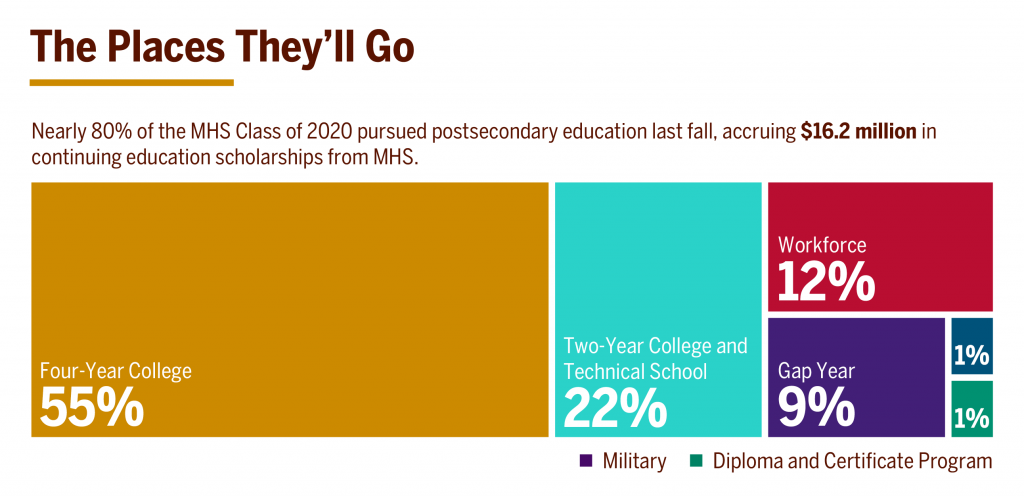
In comparison, according to the National Postsecondary Student Aid Study, only 1.5% of high school graduates nationally receive a full-ride scholarship to college and .2% receive more than $25,000 in scholarships annually.
Scholarships Offered to All
Most large-dollar scholarship programs only support students who fall within the top 10% of their class. Milton Hershey School, however, offers all students the opportunity to accrue this $95,000 scholarship.
Since 2010, the majority of Milton Hershey School graduates have received the school’s full scholarship amount.
“At MHS, 77–88% of our graduates attend college the fall after high school,” said Tanya Baynham, MHS Vice President of Graduate Programs for Success Division. “By comparison, college participation rates for low-income students are 33% nationally and 40% in Pennsylvania.”
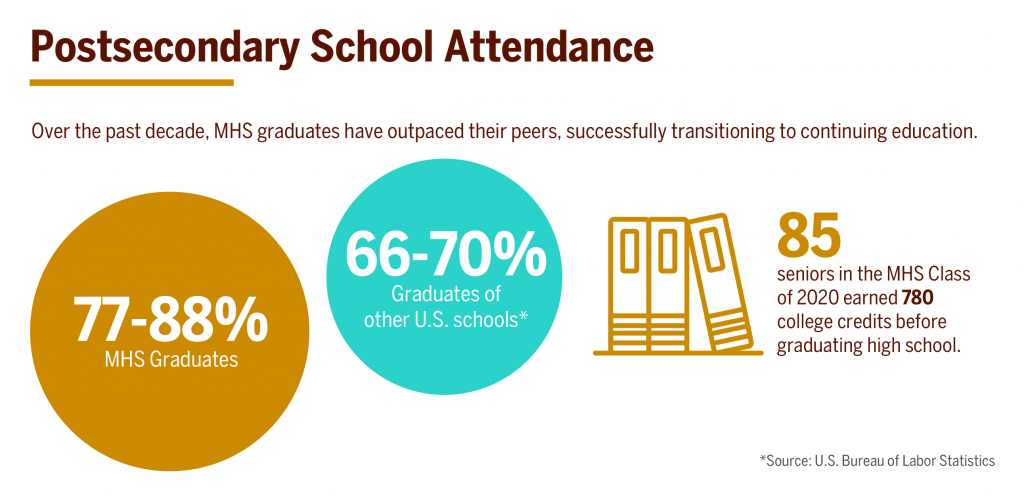
Additionally, MHS students benefit from broader usage of their school-sponsored scholarship.
The MHS scholarship covers tuition and room and board expenses, and is permitted to be used at private colleges. In comparison, many scholarship programs that are similar in nature to MHS do not cover room and board or may not allow scholarship dollars to be used at private colleges.
MHS students receive expanded financial support and flexibility with their CES scholarship, opening the door to additional options their peers may not have.
Student Access to 1:1 Professional Support
Beyond its Elementary Division, Middle Division, and Senior Division, Milton Hershey School also has a Graduate Programs for Success (GPS) Division. GPS serves as the bridge between high school and what comes next for MHS students.
Within GPS, MHS employs a full team of experts who offer one-on-one guidance to high school students. These counselors help students navigate the choice between college and career, provide higher education support during their college years, and keep students connected to each other and the school as alumni.
The technical and personal support network MHS provides to students preparing to graduate and recent graduates alike is a vital part of their path to success as young adults.
Graduate Outcomes: MHS Measures Students’ College Success
Milton Hershey School graduates in the college setting stand apart from their peers—as does MHS, the school that propelled them to success. MHS alumni and their outstanding performance in college says it all.
MHS students not only enroll in college, but they persist. Since 2017, as a result of this new program, college persistence rates for MHS alumni have risen by 6%. On average, 80% of MHS students in college persist to their second year.
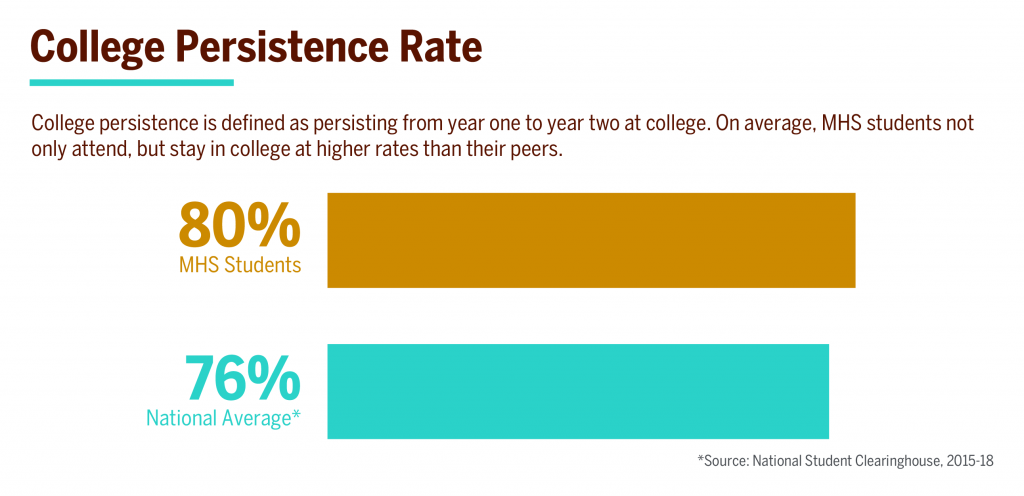
MHS also is committed to improving the college completion rates for students of color. Regardless of income or first-generation status, MHS graduates of color persist through college at 20% above their national peers and complete college at 15% above their national peers.
When considering college completion rates for low-income and first-generation college students across the U.S., 26% complete college within six years. MHS graduates who fall in this category complete college at twice that rate.
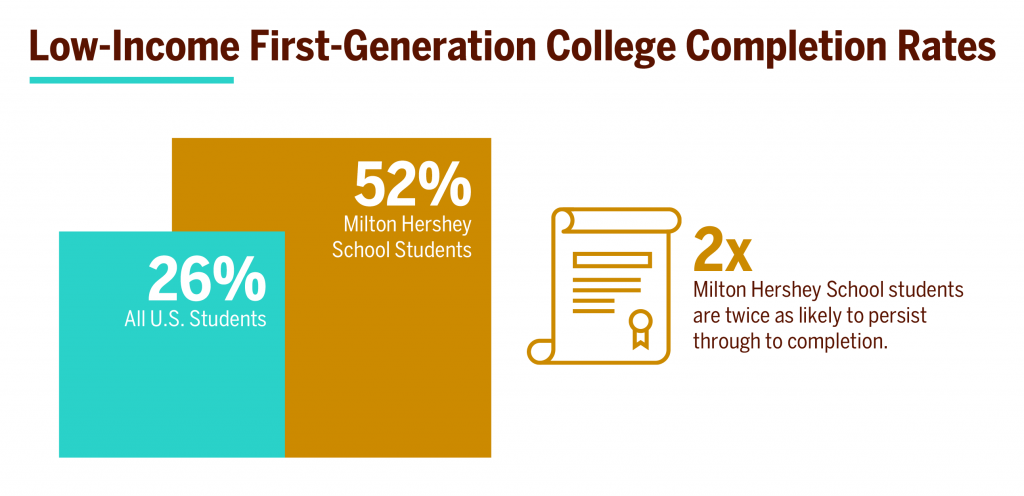
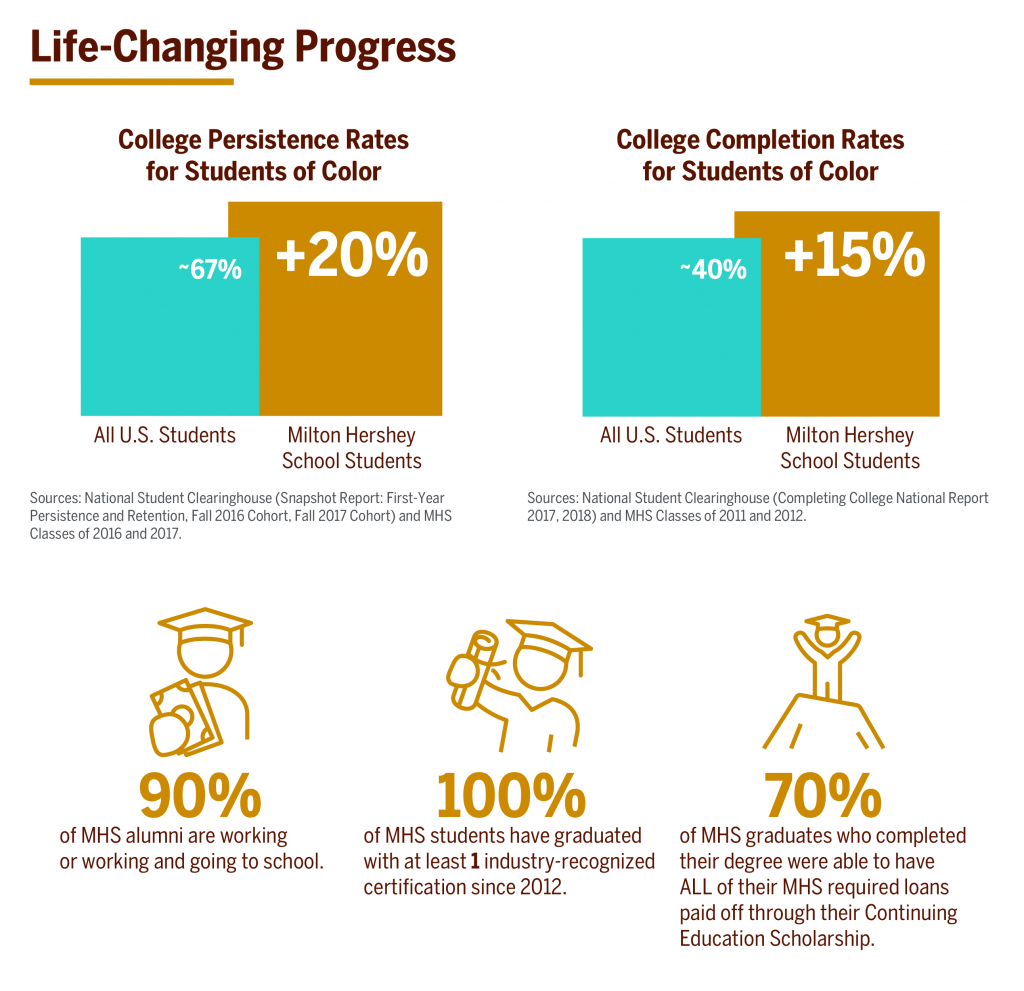
MHS also has support agreements with 24 colleges and universities across Pennsylvania. This coordinated effort is further improving college graduation outcomes for MHS students.
MHS Students: Overcoming a Lifetime of Difficulties
Milton Hershey School’s graduate outcomes are notable by themselves. They appear even more impressive when considering the additional factors MHS students may overcome on their path to graduation and beyond.
Every MHS student comes from poverty—but that’s only part of their challenging life circumstances before enrolling. Poverty also contributes to the accumulation of Adverse Childhood Experiences (ACEs), defined as traumatic events experienced by children before the age of 18.
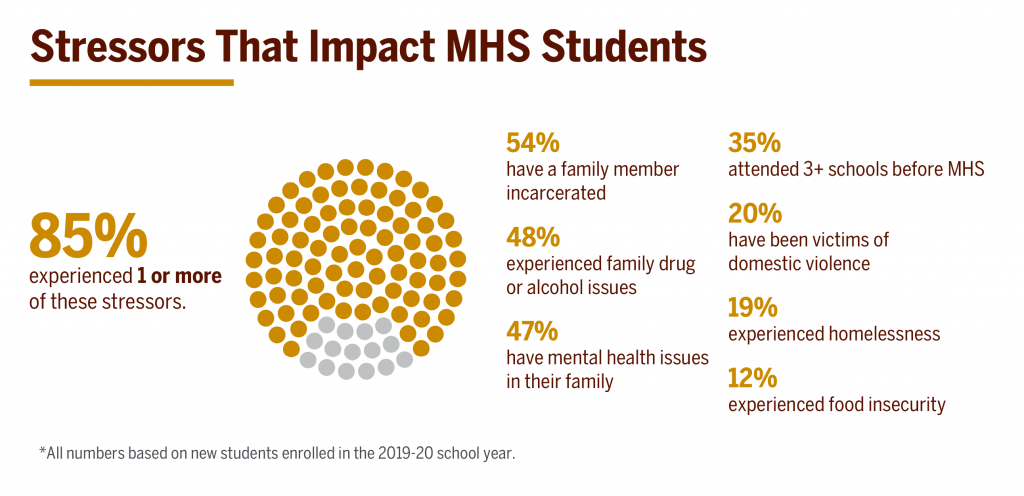
The MHS mission is to provide a top-notch education and nurturing home life for every student so they can reach their full potential. MHS relies on its full team of experts to educate and care for children coming from differing backgrounds and working through individual Adverse Childhood Experiences. These professionals help MHS students persevere and succeed.
Even before it’s time to start preparing students for life after graduation, MHS helps its students develop foundational skills that will serve them over time. MHS creates an inclusive environment that promotes growth and imagination. Students live on campus, in homes led by houseparents, who are at the core of the MHS model for care. Because of the generosity of MHS founders Milton and Catherine Hershey, students attend MHS at no cost and all of their needs are provided by the school.

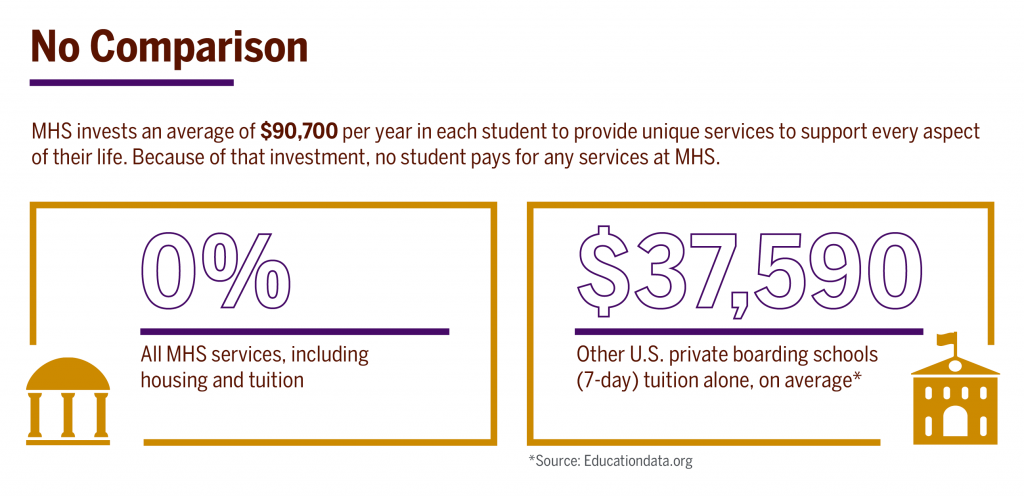
MHS covers 100% of the cost of medical, dental, and psychological care, housing, clothing, food, extracurricular activities, and more for each student, allowing them to focus on their personal growth. Inside and outside of the classroom, students are given a strong foundation rooted in safety and wellness, supported by technology, inspired by opportunities for creative expression, and grounded in the fundamentals of social and emotional learning.
Career development at MHS begins in middle school, while high school students receive increased support. This occurs through college-level courses and credits, a robust Career and Technical Education program, internships, co-ops, pre-apprenticeships, career fairs, and industry certifications. During a student’s senior year of high school, they move to Transitional Living buildings to help prepare them for independent life as an adult. After that, they are mentored and supported for the full duration of their college years.
College and Career Readiness Is a Hallmark of MHS
MHS supports students before and after graduation day. From counselors who are experts in their field to other resources, GPS provides individualized support to Senior Division students and graduates to best navigate life after MHS.


